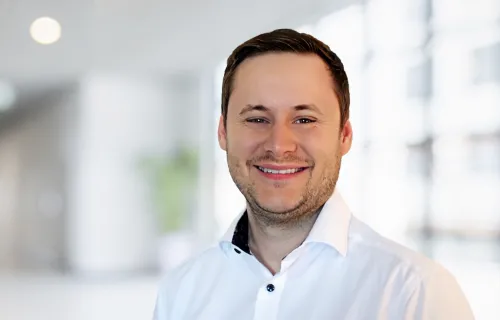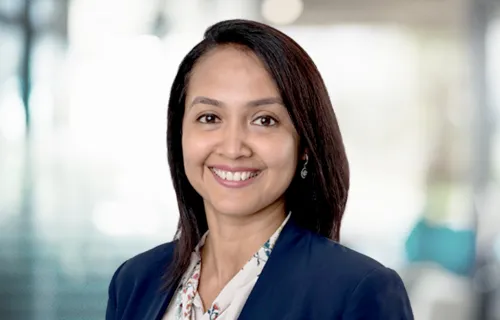Learn about what it’s like to be an AI development and strategy leader through the eyes of Dr. Parimal Kulkarni, a CGI Partner based in Canada.
Parimal, can you share what you do as a leader for AI development and strategy?
With AI evolving rapidly and CGI’s strong global presence in this space, I focus on transforming the potential of AI into tangible business outcomes for our clients.
In practice, this means combining my technical expertise with industry knowledge to shape AI strategies, identify the most promising use cases, and guide clients through the full life cycle of AI solution delivery. I help ensure that these initiatives aren’t just innovative, they’re scalable, ethical and closely aligned with each client’s objectives.
Whether it’s leading cross-functional teams or combining thought leadership with hands-on execution, I work to deliver lasting impact from our clients’ AI investments.
What kinds of clients do you support, and what are some of your main responsibilities?
I focus primarily on data science and AI projects designed to improve efficiency and enhance services in the public sector.
On the data science side, this means designing, building and testing AI solutions for a variety of use cases like code generation and supply chain optimization. These tools automate calculations and support case agents by easing their workload and streamlining decision-making.
On the AI strategy side, I help develop roadmaps that guide how clients implement or scale the use of AI. That includes everything from spotting opportunities to integrating AI into existing workflows.
One project I’m especially proud of supported fire safety efforts among First Nations communities of British Columbia. I helped build a computer vision model that can detect fire safety equipment via images. From those results, we generated risk profiles for each site, giving community leaders a clearer picture of areas that might be vulnerable to fire damage.
What skills are most important for someone to succeed in a role like yours?
To succeed, you need a mix of technical knowledge, strategic insight and strong communication and leadership abilities.
It starts with truly understanding our clients, their industries, challenges and direction. This context is essential for spotting the right opportunities where AI and machine learning (ML) can make a real difference.
On the technical side, a solid foundation in AI and ML is key. That means knowing how to code and having hands-on experience with current technologies. Just as important, you need curiosity and a commitment to learning, because in technology, particularly AI, things move fast.
You must also build skills in effective communication and a consultative mindset. Sometimes we collaborate with client tech teams; other times, we speak directly with senior leaders. In both cases, our job is to translate complex concepts into clear, compelling value.
AI strategists also need to guide teams across disciplines. We work with data scientists, engineers and domain experts, often overseeing complex, large-scale initiatives.
Through it all, we ensure a responsible AI approach by prioritizing AI ethics, managing bias and ensuring compliance with regulations. It’s not just about building powerful solutions; it’s about building them the right way.
How do you typically organize your day?
Since we work in an agile environment, most mornings begin with a standup—either with our internal team or with the client. It’s a great way to stay in sync, review progress and align on the day’s plan. After that, I dive into project work and meetings, and the rest of my day flows based on the day’s priorities.
Around lunch, I like to catch up with colleagues or read up on the latest technology trends. Both of these help me stay connected, inspired and informed.
Toward the end of the day, I review what I accomplished, update my to-do list for the next day, and check in with the team if anything needs to be wrapped up.
In the evening, I make time to unwind, either by spending time with family, going outdoors or reading something that helps me reset. It really helps me come back the next day with a clear mind and fresh perspective.
And what do you enjoy most about working at CGI?
What I enjoy most is the problem-solving aspect of my work, which is both challenging and rewarding. What’s more, I get to do it alongside incredibly talented and collaborative colleagues.
I also value CGI’s strong learning culture. We have a wealth of internal training resources, and I regularly participate in sessions offered by our technology partners to stay current with the latest innovations. It’s inspiring to work in an environment that encourages and supports continuous learning.
I also receive consistent support to grow my career. My leaders actively invest in helping me expand my skills, especially in the fast-evolving areas of analytics, AI and ML.
As a woman in a technology leadership role, I’ve found a strong network and support system here at CGI—one that empowers me to lead, grow and succeed.
Thank you for sharing your story, Parimal. As a final thought, what advice would you give your younger self?
Don’t let your current role or skill set limit your career path. Stay open to learning, evolving and taking on new challenges. When you allow yourself to grow beyond where you started, you’ll discover opportunities you may never have imagined.





